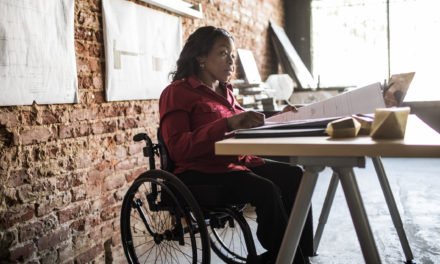
In the past few years, diversity has become a hot topic of discussion in most U.S.-based organizations. The realization that today’s market is demanding that companies mirror the customer base that they serve and commit to diversifying their workforce sent many companies scrambling to put together or purchase DEI (diversity, equity, and inclusion)-focused training courses. Starbucks’ decision to put 175,000 workers through diversity training, in the wake of a racially charged incident, is only one of the most conspicuous examples.
Although it might not be obvious, organizations have been offering (frequently mandating) diversity training for decades, starting as early as the late 1960s/early 1970s, when the Social Security Administration put 50,000 staffers through racial bias training. By 2005, 65% of large firms offered diversity training.
If corporate America has been doing DEI training for over five decades, why aren’t there more diverse candidates in leadership roles in 2022? Yes, it is true that the percentage of CEOs in Fortune 500 companies who are white males has decreased in the last twenty years, but only from 96.4% to 85.8%. Perhaps not surprisingly, the majority of the seats lost to white male CEOs went to white female CEOs. As of 2020, only 1% of the Fortune 500 CEOs are African-American, 2.4% are East Asian or South Asian, and 3.4% are Latinx.
There is a significant body of research that suggests that anti-bias training on its own does not eliminate bias or change workplace behavior. Moreover, there is some evidence that stereotype reduction training actually reinforces stereotypes, making them more accessible in participants’ minds. This might seem counterintuitive (and even shocking) until you think back to any company-mandated training you had to sit through. Can you remember what it was about? How much of it did you internalize and apply afterward?
DEI training, in the absence of an inclusive company culture, can lead to defensiveness, discomfort, and worse, including frustration and distrust, if employees feel that the training will not be followed by concrete plans demonstrating leadership’s accountability and commitment to diversity, equity, and inclusion.
Yet ignoring the DEI issues that exist within organizations is not an option. If implemented correctly, training can work — but only if it is part of a systematic approach that reflects an organizational commitment to DEI. Before hastily booking training, companies should consider the following:
- Understand where you are. Conducting a DEI assessment can help leaders evaluate the current culture, and identify gaps and opportunities in the DEI space. Some organizations find that their main DEI issue is inclusion, and building a culture that creates safe spaces and welcomes and connects all groups can be an important step prior to conducting training. Once people feel comfortable expressing their opinions and speaking up without fearing repercussions, DEI training can foster meaningful conversations and help move the organization forward on its DEI journey.
- Identify the DEI issues that need to be addressed. Frequently, DEI training fails because the course is not well-matched to the problem in need of solving. There are many situations where simply increasing employees’ awareness and knowledge is not enough. If the current organizational DEI issues cannot be resolved by increasing knowledge, information-based training will not result in any meaningful changes in culture, and can even exacerbate frustrations and tensions.
- Consider intersectionality. Each individual encompasses multiple social identities — I am not just a woman, but also an immigrant and a parent — which result in unique lived experiences, opportunities, and challenges. DEI training that relies on some type of categorization — grouping respondents by race, national origin, or age — and fails to consider the complexity of human experience can hinder progress instead of advancing it. This binary presentation can trigger feelings of defensiveness and hostility instead of the intended empathy toward one another.
- Identify follow-through strategies and establish leadership accountability. Companies often put their employees through mandatory, day-long DEI sessions, expecting the training to drastically change the organizational culture and set the company well on its way to DEI utopia. Meanwhile, no additional work is being done beyond the training to foster a culture of inclusion, recruit diverse candidates, or promote (or establish) equitable opportunities. The result is predictable — employee disengagement and lack of DEI progress.
DEI training is a valuable tool that can help your organization move forward on its DEI journey. Alternatively, it can be completely ineffective as a one-off session in the absence of other DEI initiatives, or if it doesn’t match the company’s specific needs. Inclusive and intentional DEI-focused leadership requires a sustainable, measurable, and multi-faceted approach that embraces all aspects of business. Moving from intent to integration, establishing accountability for implementing policy changes, and providing additional opportunities for ongoing education are much harder to do, and might yield fewer feel-good checkboxes and photo ops; however, these are the reliable steps toward meaningful change.


















